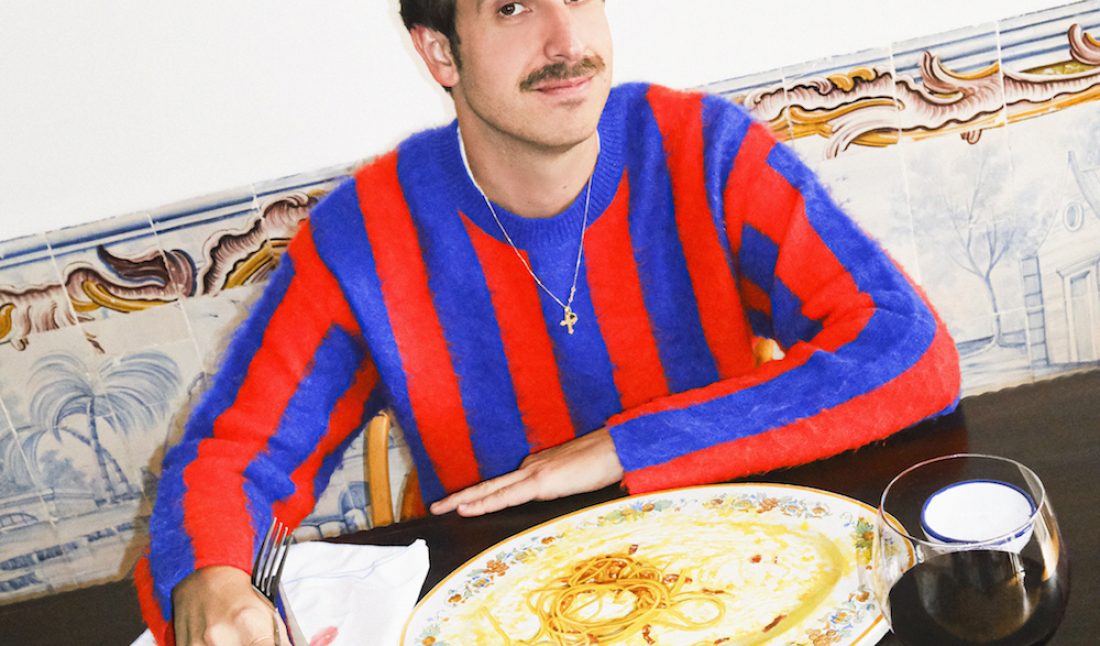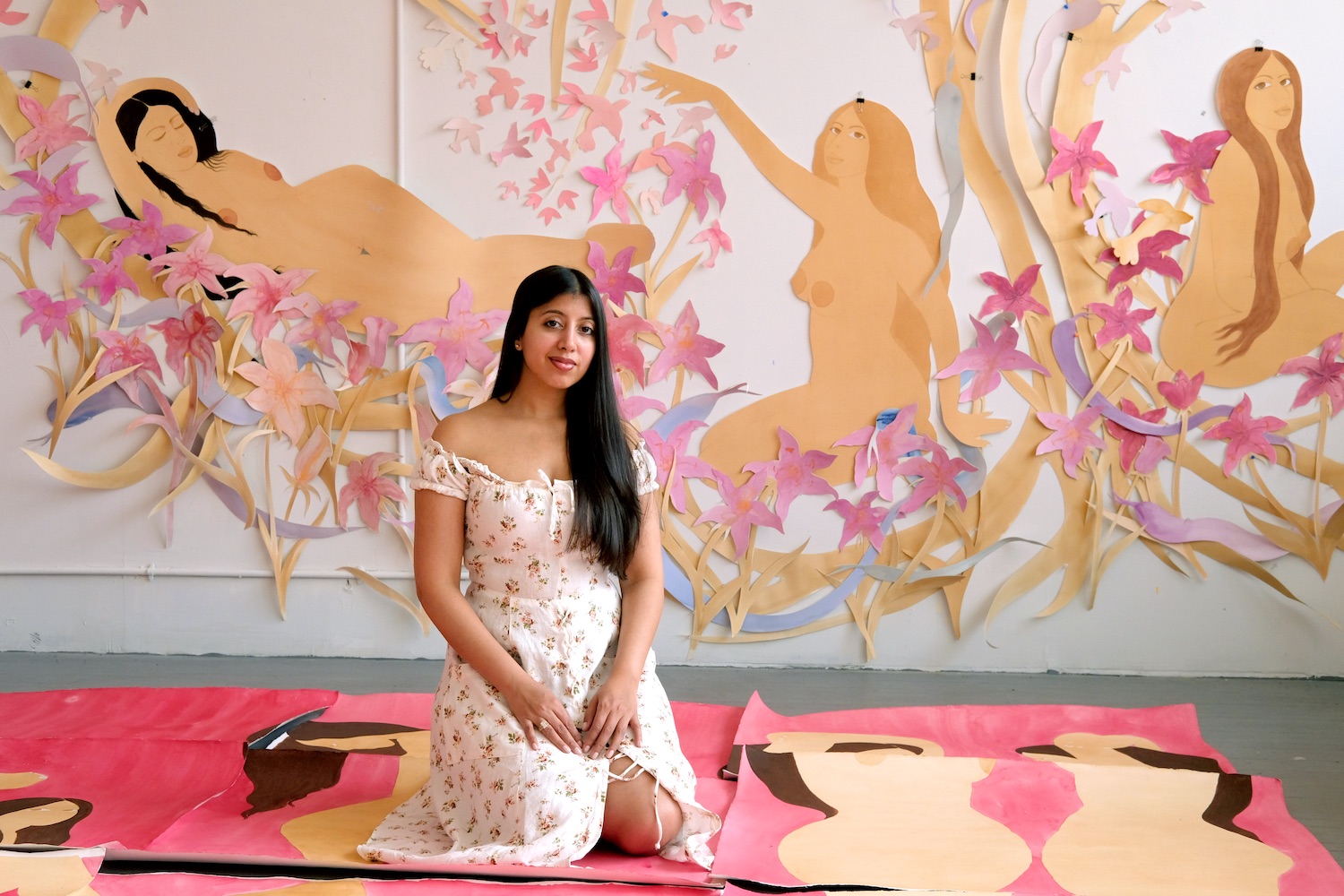A table covered in the remnants of last night’s dinner party filled the space of La FRESH Gallery in Madrid in February of 2019. Upon closer look, visitors to “Plats Brut” realized the trompe l’oeil effect of Ignasi Monreal’s “Sobremesa,” an ongoing series of paintings depicting what remains after gathering round a shared meal. The Barcelona-born, Lisbon-based artist’s work is experienced in an entirely new light thanks to the pandemic, when dining together has become so very precious.
Monreal started painting on canvas just a few years ago, after moving to Rome. Before that he lived in London, where his digital paintings and artwork were commissioned by major brands such as Gucci, Louis Vuitton, Dior, and Dunhill. He’s done a recent series of portraits of Olympians for Airbnb and notables from 2020 for Squarespace.
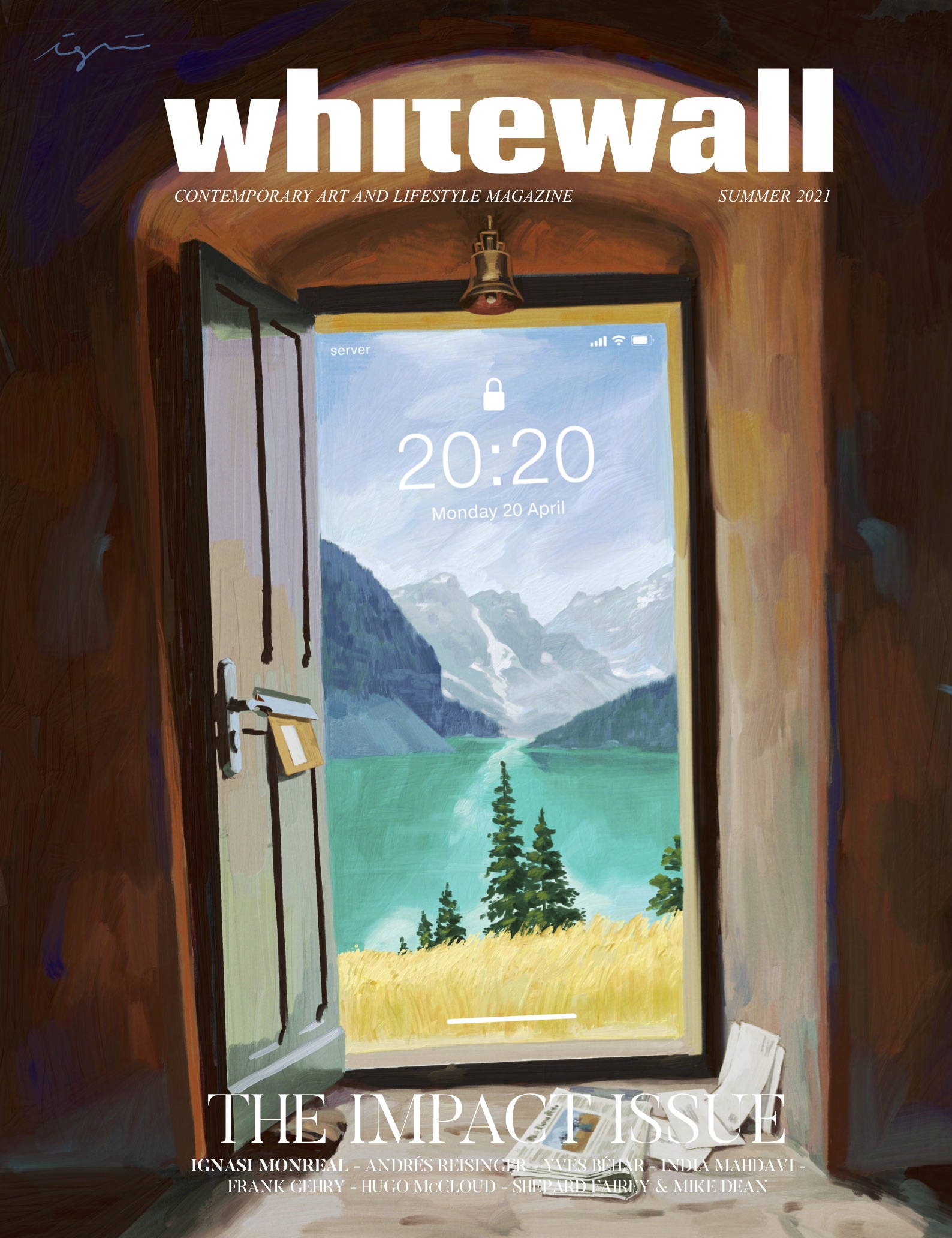 “Outside” by Ignasi Monreal.
“Outside” by Ignasi Monreal.
Through the recent boom of digital art thanks to major sales of NFTs, the artist told us during a recent studio visit in Lisbon, Monreal has found a validation of sorts in his digital paintings that he wasn’t receiving prior to 2021. Interested in marrying the timeless with today, he’s continuing to explore traditional painting as well as craft, like in his ceramics projects with the Madrid studio Alfar 8.
Monreal spoke with us about his visual investigation of value as well as his new home and studio in Lisbon.
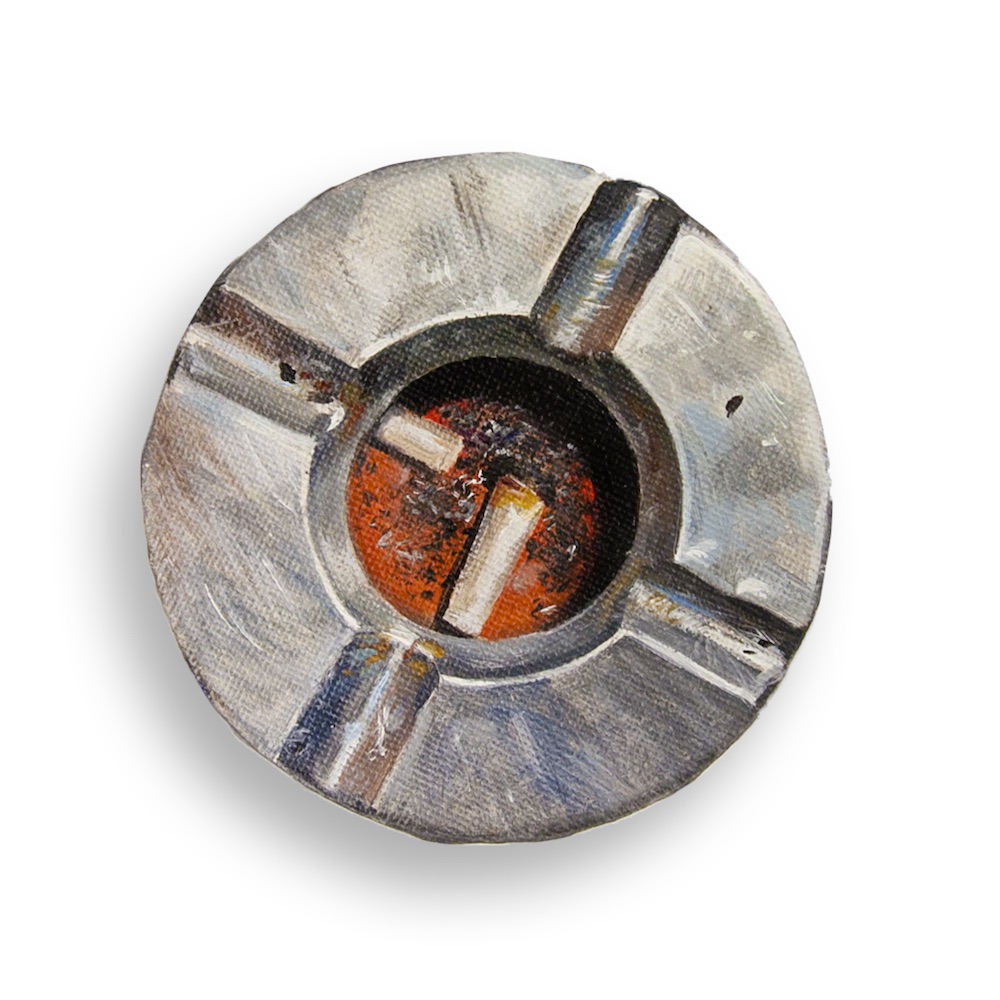 Ignasi Monreal, “Ashtray,” 2019, oil on canvas, 10 x 10 cm. Courtesy to the artist.
Ignasi Monreal, “Ashtray,” 2019, oil on canvas, 10 x 10 cm. Courtesy to the artist.
Whitewall: What was the starting point for your “Sobremesa” series?
IGNASI MONREAL: When moving to Rome from London, food became the way I started getting to know the city and getting to know people and building and my experience there. I had never done oil paintings before—I was doing digital for almost a decade—and Rome was the place I picked up the brush and started painting again.
At the beginning it started as practice of still life painting. It was a celebration of the mundane, really, these experiences around the table with people you love. But it’s these moments that you enjoy together.
A friend of mine, an American one, was the one who pointed me—we are the only language who has a word for the time you spend at the table after you finish eating. So, it’s a celebration of this kind of Spanish culture mixed with practicing oil and playing with trompe l’oeil, which is a big inspiration that I took from Rome. Rome is full of trompe l’oeil, and it sort of all came together, merged, and this thing came out of the blue.
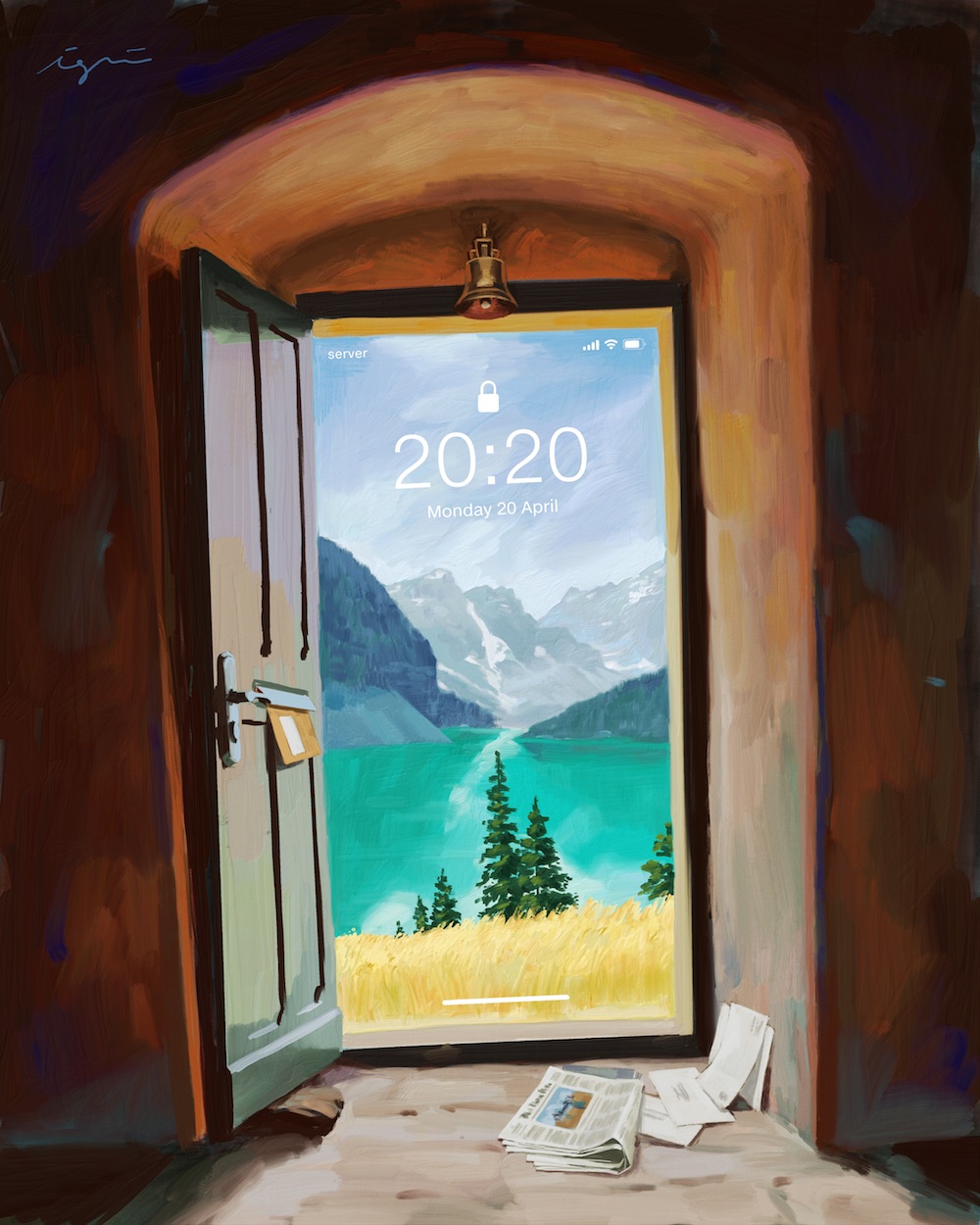 “Outside” by Ignasi Monreal.
“Outside” by Ignasi Monreal.
WW: What kinds of feelings do you hope they evoke?
IM: For me, these paintings are a set of memories, almost like pictures of this moment that I’ve lived. Especially because food in London, if you’re on a budget, is not good. And when moving to the Mediterranean Italy, food became this central point. It became my reality. It’s not that I wanted to celebrate or anything, but it became a focal point of my life there. I just wanted to celebrate the sobremesa. It had to be Spanish people who came up with this word. We love just being with a glass of wine, being at the table, and laughing and having good times.
WW: Do you feel like these have taken new meanings given how precious gathering around the table has become?
IM: They have to me. Because, especially during the lockdown, I looked back at them and remembered those good days where you could be together and enjoy time with your loved ones.
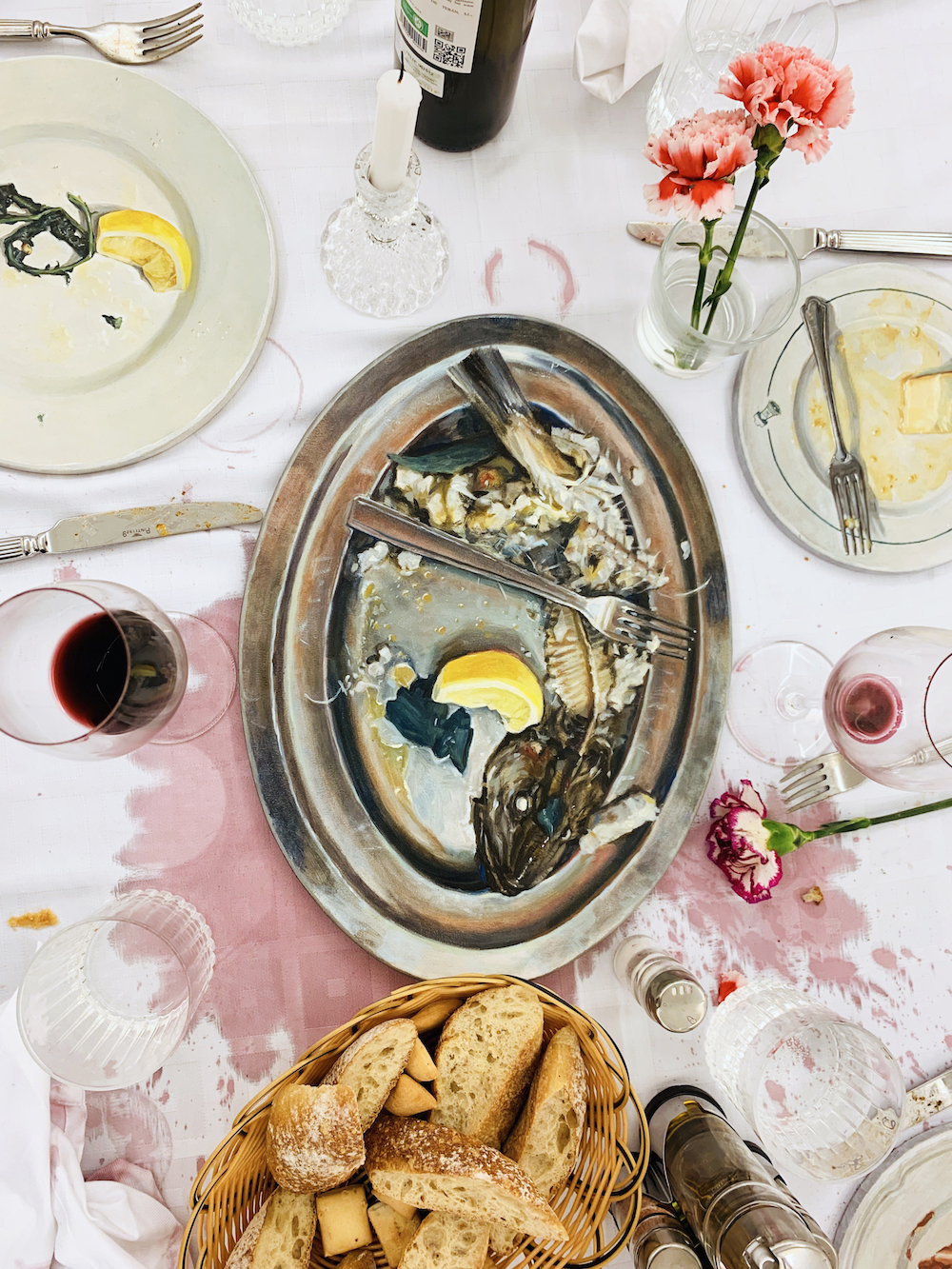 Installation view of Ignasi Monreal’s “Plats Bruts” (February 28–April 12, 2019) at La FRESH Gallery in Madrid, courtesy of the artist.
Installation view of Ignasi Monreal’s “Plats Bruts” (February 28–April 12, 2019) at La FRESH Gallery in Madrid, courtesy of the artist.
WW: You show these paintings lying down flat rather than on the wall. Why is that method of installation important?
IM: I thought it was only natural that these be lying down on tables. We set up a big table in the gallery the night before the opening and we had a big dinner with close friends and the gallerist that was what the exhibition was about. When we finished the food, we just took out the plates and changed them for my paintings. The set was this dirty table for a month and a half—which was exactly what the whole thing was about. It was an imprint of that great moment lived together.
Even in real life, some people don’t understand that it’s a canvas. The effect works so well that it confuses people. I think it was interesting in that way, because what’s the purpose of figurative painting after the invention of photography? Trompe l’oeil justifies figurative painting, in a way. Not that it needs to be justified—you have to work just for the enjoyment and because you believe in it. But I think that it ties it all together. They call them “hyper realistic” but they’re not that hyper realistic when you see them close. The brushstrokes are expressive. It’s not super detailed.
WW: Late last year you installed a project with Alfar 8, a Wi-Fi QR code providing free Wi-Fi to the public. How did that idea come to you?
IM: It came through the studio Alfar 8, which is a ceramics and porcelain studio that we opened through having fun with a friend and the many conversations we had. It was an experimental thing. We started doing it as painted tiles. And it was almost logical when you look at tiles, I thought of a QR code immediately. So this idea was already there in the back of my head.
But we also created a router made of ceramics, so this seemed like a natural step forward to that. And because we were putting it in a public space—which is Plaza de España, one of the principal squares in Madrid. I thought of all these teenagers who don’t have data on their phone and they go to McDonald’s or Apple to steal the WiFi. I was like, “Well, you can have it here for free without having to go to a shop. And at the same time, enjoy a piece of handcraft.” Because the tiles were hand-painted, and it’s like taking this Spanish tradition of ceramics and sort of revamping it and giving it a new use.
WW: What has it been like seeing the work as it engages real life?
IM: Well, that’s the interesting part. You release these things to the world and they have their own life, and that’s the beauty of it. I don’t like having full control. With painting, yes, because it’s your own and there’s no interaction to it, but it’s nice to see it come to life through the engagement of people. And also this piece needed a certain amount of people connected at the same time in order to activate certain aspects of the piece. So it creates this small ritual of people, strangers, who come together and agree to connect at the same time, have free Wi-Fi, and the piece reacts to the connection of the people as well.
It’s a piece that lives with the interaction of people. That’s why it was also a public space thing; it lived with the environment, not just sit there to be beautiful.
I like to investigate this idea of mixing ceramics with technology because technology—normally all the gadgets and tech are always plastic or metal. And ceramics seems like a very handmade, warm, human material. We were very interested in bringing handcraft and craft into something as robotic, so to say, as technology, and see how it played out. That intersection was interesting for us.
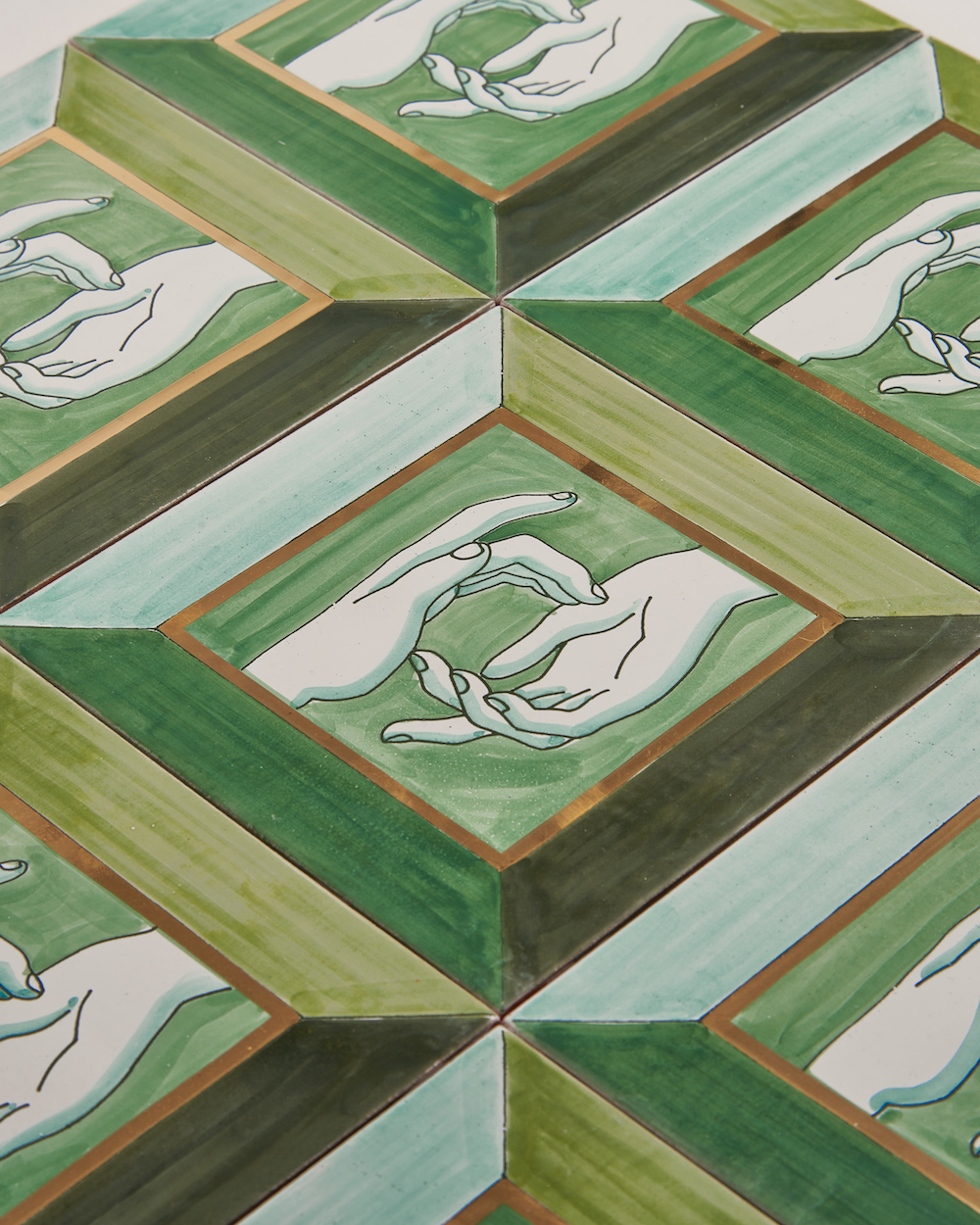 Tiles for Alfar 8, courtesy of Ignasi Monrea.
Tiles for Alfar 8, courtesy of Ignasi Monrea.
WW: You’re also currently working on a digital project that will change in reaction to the value of the work—whether that be cryptocurrency or those bidding on it. Can you tell us more about what you’ve envisioned for this piece?
IM: I’m very excited to actually be able to feel like digital work is something legitimate now. Unfortunately, because we live in a capitalist world it had to be like a big sale through Christie’s to feel that the work was legitimate. I have been painting digitally for, like, 15 years and I never felt it was good enough, unfortunately.
And this new NFT movement is very interesting for many reasons for creators. But for me, it said, “Okay, you are on the right track”—which until now I never knew. It legitimized the work. And rather than just releasing the paintings or animations I already had, I wanted to give it a little more thought than rush and publish. I wanted to be able to explore the medium because digital painting and animation are really just scratching the surface of what you can do—we can push it beyond.
So, it is a painting that changes according to value. Because at the end of the day, with NFTs, what you’re buying or trading is the value of the piece. It’s not like a painting or sculpture, buying an object. It’s the abstract value of it. For me it felt logical that if anything has to change, it has to be according to its own value. It becomes this NFT that’s aware of itself and how much it’s worth, and it will grow or die according to what people want to pay for it. But it’s not so much about the money; it’s to visualize the value in a way that is poetic and understandable. Because this piece, if I show it to my grandmother, she will understand what’s happening—and also to a kid.
WW: Why are you interested in exploring this idea of value visually?
IM: The whole mechanics of how it works is very interesting because it’s something completely new for me. I’m a painter; I don’t know coding. But it definitely opens a whole new world of possibilities. And beyond flowers and this concept I want to investigate other procedural generative ways of doing painting or art itself.
For me, it’s like an experiment, but I think it’s going to work beautifully. What’s the point of having stocks? It’s value. Instead of having a number on your phone you have a beautiful piece of art and support an artist.
For me, it’s supporting the artist and being able to track the authenticity, and for every sale the artist can make some money out of it. You’re removing the middleman, which, yes, is necessary, but a lot of people struggle because they don’t have a middleman. It’s very selective, very snobbish, and very precious. This is giving a whole world of possibility to a lot of creatives out there, and they deserve it. You don’t have to be a genius to be able to live from what you do. Craft is underrated at the moment, in the whole art industry. Having a skill and having something it took years to learn, why not be able to live from it? There’s space for everybody, and I think this new digital market has opened this space for everybody.
There’s a whole world of people who also have a chance to have an imprint in culture. What’s high culture and low culture? Low culture is also culture, but who determines what’s good and bad?
WW: You’ve said you’re interested in the timeless quality of art and its archaeological role for future generations. How does that play out in your practice?
IM: It’s true; it’s a legacy you leave behind. I try—I don’t know if I’ll succeed—to make pieces that outlive the moment and can be understood now, and hopefully can be understood in a hundred years. And in a hundred years it can give context to what today is.
It’s not about reaching an understanding, but if you can touch people, that’s the meaning of art. I like creating things that you need to look twice and it’s not self-evident immediately. But it should be truly democratic. I want to do pieces that my grandmother can understand as well. If I do a plate of food like I’m doing now, you can see it in a hundred years you’re still going to understand it’s food, but maybe it will tell you what kind of diet we ate back in the early 2000s. Because maybe in one hundred years there’s no fish because the fish have eaten all the plastic, things like that, things that we now take for granted.
Even if you look at the old masters and the food in their paintings, there’s something beyond that familiar part of it, like, tell something about a specific time that can be understood in a hundred years.
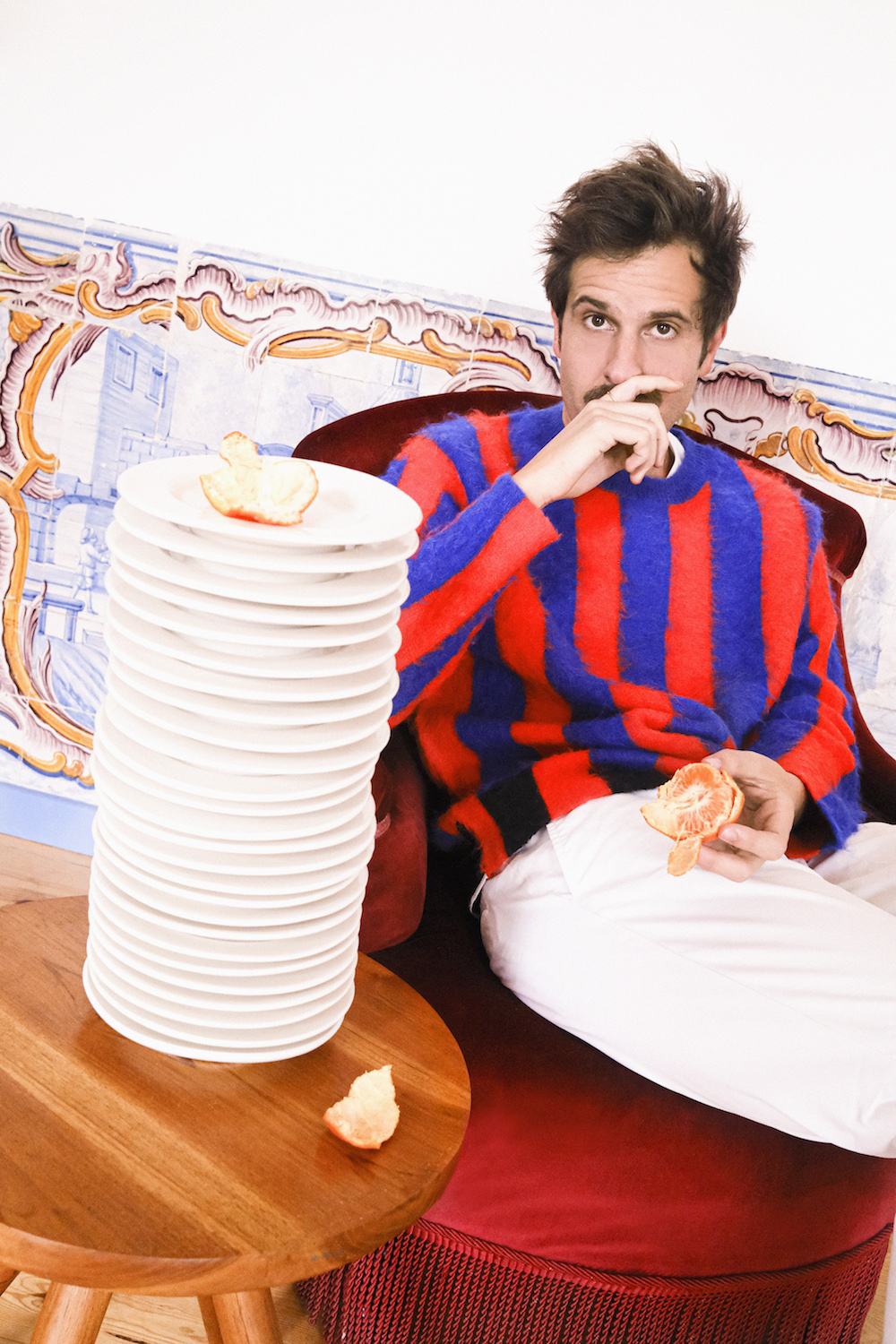 Portrait by Aurélien Caoudal.
Portrait by Aurélien Caoudal.
WW: Let’s talk about your collaborations with brands like Gucci, Bulgari, and Assouline. Do you see a fluidity between your personal practice and your work for clients, and are there aspects of commissioned projects you bring back to the studio?
IM: Of course, you cannot help it. It’s impossible. It all comes from the same hand. But it is two separate practices. I studied advertising, and I also enjoy working with a brief. But for me that is not art and it’s not a true expression of what I want to do; it’s working for somebody, and I’m using the skill I have to make a living out of it.
All the advertising work is buying freedom to then do the pieces that I want without having to worry if they sell or not—so I can keep pure in my personal work while working for other people. I actually enjoy these kinds of challenges. For Gucci, for instance, I had to paint over 200 artworks. So this speed of painting that I gained after nine months was incredible. When I started it took me a week to do a painting, and when I finished I could do three paintings in a day. I actually like that constriction of working for other people because it gives me the will to then do my personal work. In this way, I think they complement each other.
WW: You were living in London when Gucci called you, and then you decided to move to Rome to work in a different environment. You discovered an environment that also inspired you there.
IM: Yeah. In London I discovered that I could be a painter. And in Rome, I think I discovered what I wanted to paint. So now I’m interested to see what happens in Lisbon, because every city that I change brings me something new. Nothing that happens in my life is on purpose, but when you look back to post-rationalize it, it makes sense.
The reason why I moved to Rome is because I didn’t really have a plan for the first time since I was a kid. I always wanted to go to London and work, and do this, and I went and I did much more than I ever thought I could, and I was like, “What do I do now?” So, I thought, “Let’s try Rome,” because my hero was Velázquez. He went to Rome and achieved his excellence as an artist.
In a way, it worked—I started painting. I didn’t even know how to prime a canvas. I had no idea. This was, I think, three years ago. As soon as I moved to Rome, I bought a canvas. I didn’t even know how to use turpentine.
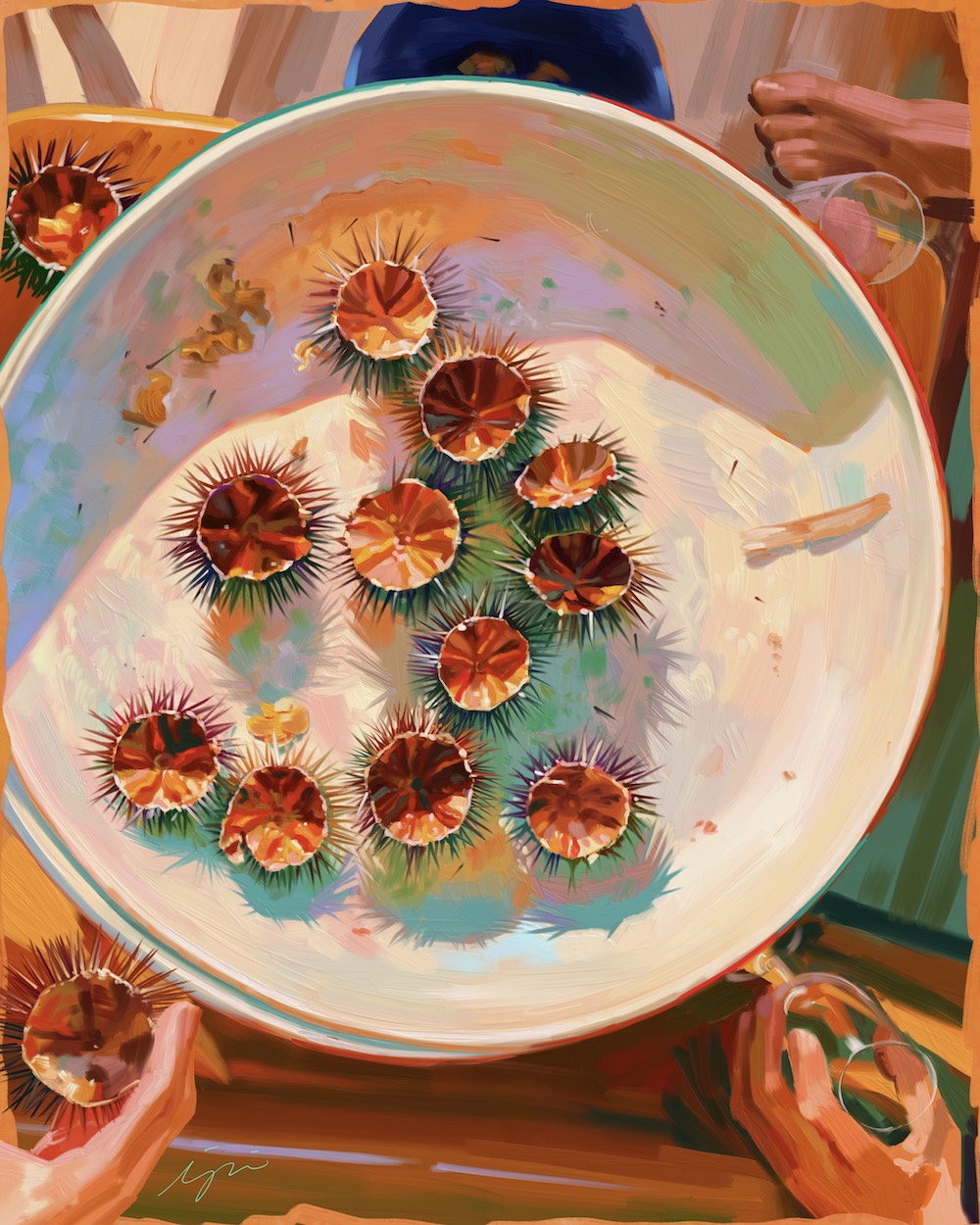
WW: So now you felt you’ve done your time in Rome and you decided to move to Lisbon. Why Lisbon?
IM: I think it was the increasing connection with ceramics and the studio we opened in Madrid. I really want to paint ceramic murals as a medium. As a format it’s very interesting, also very Spanish. Also, it’s sort of closer to home. I don’t want to go back home yet. If I go back to Spain, I know I’m going to stay. I want to live a little bit more adventure before I settle.
I want to start talking to ceramic producers here and see what we can do. The motivation is to evolve my practice, because it has this sculptural element. It’s still painting, but the interesting thing about tiles is you can lift them up and create 3-D things. You can create volume. I want to do furniture with tiles, for instance.
I just moved in to my studio. I can only imagine now what will happen. Most of my work and my ideas come by doing things and working.
WW: How do you see Lisbon inspiring you so far?
IM: It has great light, for one. And the second is the water. Being next to the sea and a big body of water brings a whole new level of peace I’ve never experienced before. I didn’t know I needed it until I had it. It’s very calming.






